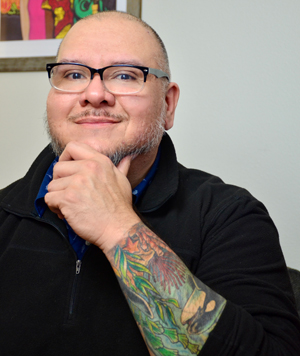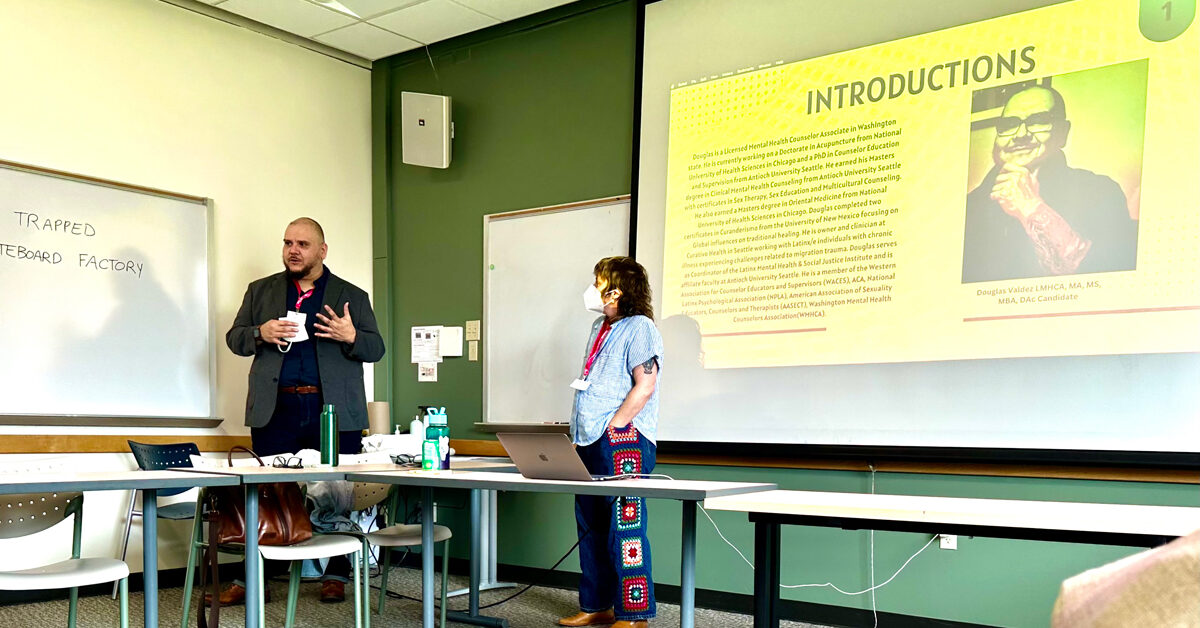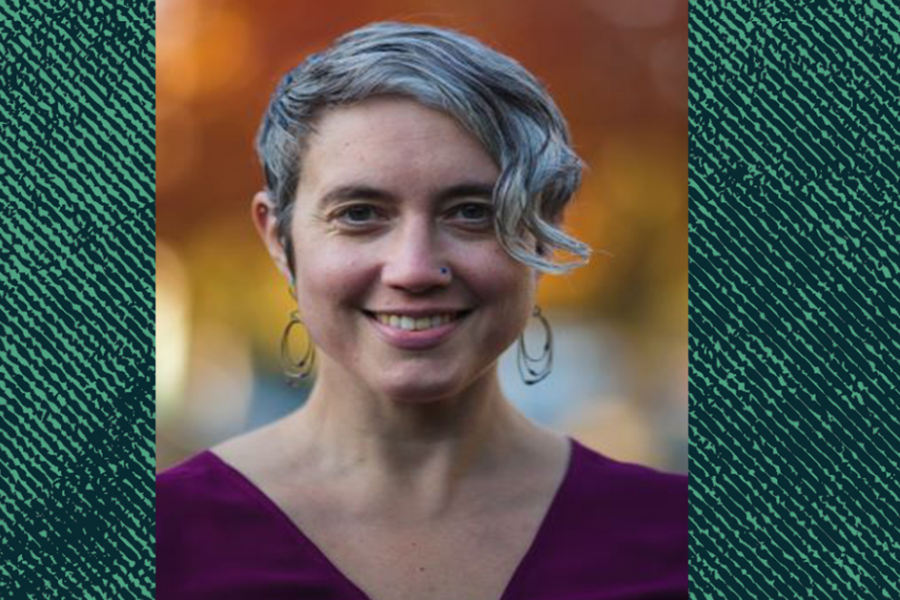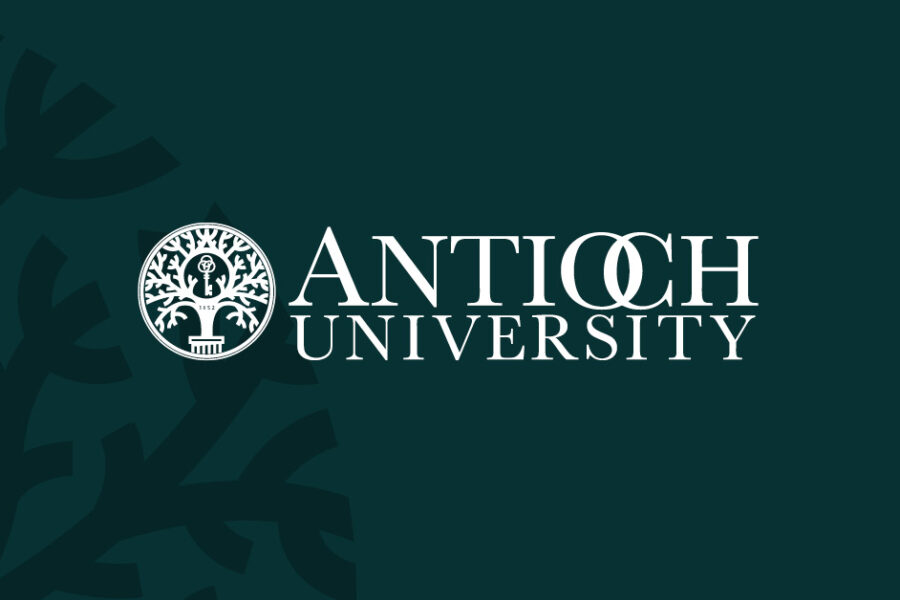Douglas Valdez grew up familiar with curandería, the traditional healing practices that his mother had learned as a child in Mexico. When he was sick, she would pull out an array of herbal tinctures and dapple his tongue with their bitter, dark liquid. When his skin got irritated, his mother spread tangerine peels on it—their aroma delicious and lingering.

His mother herself suffered from rheumatoid arthritis, and to find relief for her swollen, painful joints, she sought the help of a different medical tradition: acupuncture and traditional Chinese medicine. To get these treatments, she regularly brought Valdez on the journey from their predominantly Latinx/e neighborhood in Los Angeles to nearby Chinatown. Having limited English proficiency, she relied on her son to serve as her translator. He helped her navigate not just an unfamiliar language but also a different medical tradition—one equally embedded in the practitioners’ culture as the curandería they practiced at home.
This early experience of interpreting between different languages, cultures and medical practices fed a curiosity that eventually led him to enter the field of healthcare himself. Recently, Valdez received his MA in Clinical Mental Health Counseling from Antioch University, along the way completing certificates in Sexuality Education, Sex Therapy, and Multicultural Counseling. He is currently studying towards a PhD in Counselor Education & Supervision at Antioch—and concurrently earning a Doctorate of Acupuncture and Chinese Medicine from the National University of Health Sciences.
All of these experiences and studies have combined to make Valdez an insightful teacher, and today he shares this background and specialization as an Antioch faculty member. He is teaching the course “Latinx/e Theories and Clinical Practice” for the Clinical Mental Health Counseling program on Antioch’s Seattle campus. In this course he equips students with the tools and methodologies to meet and support Latinx/e people in a clinical setting—and especially considering and responding to their cultural context.
Cultural Humility in the Psychology Classroom
Valdez identifies as a queer Latinx/e cisgender man who grew up navigating languages, social expectations, and cultural landscapes. These played out differently at home, in his neighborhood, and in places where mainstream American culture dominated. And now as a mental health professional, he sees how each setting calls for different approaches. Valdez stresses to his students how important it is to consider culture and ethnicity when working with people whose identities connect them to communities that fall outside of the dominant culture.
Cultural humility has become one of Valdez’s guiding concepts. Cultural humility is the idea that a clinician begins from a place of curiosity and humility when meeting their clients, leaving behind preconceived ideas and desires to fit a person in some categorical box and then roll out a prescriptive course of treatment. Of course, a clinician cannot and will not know all of the cultural nuances and lived experiences of a client. Cultural humility says that through curiosity, a clinician can educate themself to meet clients on their cultural grounds and provide culturally sensitive treatments that might fall outside dominant approaches to therapy. Cultural humility also prevents essentializing the client based on cultural tropes and stereotypes. For instance, Latinx/e is an identity that designates people of certain heritages, yet those heritages are multiple and heterogeneous. The best way to know someone’s culture is to talk with them about it.
Being raised amongst a community of people, many of whom had particular stories of how they journeyed to the U.S., deeply influenced how Valdez approaches clinical psychology and teaching. Since Latinx/e is not a monolithic group of people that share a single culture, it is important to Valdez that as part of teaching “Latinx/e Theories & Clinical Practice” he exposes students to a multiplicity of migration stories and acculturation processes.
Valdez explains that some migrant stories are told more than others, which influences who we think of when we hear the word “migrant.” Through case studies based on real people and their lived experiences, Valdez invites students to further consider how the migration process becomes even more layered if the client is queer or Afro-Latinx/e, given that people that hold these identities tend to be marginalized even within their own communities. How do colorism, racism, homophobia, and misogyny layer into how a person experiences the migration and acculturation process?
“There are a lot of layered components, and the idea is for students to get insight into some of these narratives,” says Valdez. He explains, “They’re not going to know everything—no one really knows everything!—but the class is an invitation to learn more about the Latinx/e population through case studies to give students a taste of what they could potentially be listening for.”
As a faculty member at Antioch, Valdez’s goal is to foster a classroom where he exposes students to different tools and approaches to equip students to work with Latinx/e communities in ways that lend themselves to culturally relevant assessments and treatments. Valdez says, “Working with Latinx/e populations, it’s important to think that there isn’t one-size-fits-all for the population. The goal of the course is to introduce a variety of different ways to use the different healing modalities. It comes down to adapting treatments to the person sitting in front of you, looking at all the layers, looking at the lived experience, which requires cultural humility.”
The Liberatory Potential of Mental Healthcare
Learning through case studies forms the core of “Latinx/e Theories & Clinical Practice,” and as dialogue arises from these case studies, Valdez brings in the theoretical component of liberation psychology. Liberation psychology is an anti-colonial approach to psychology that examines and addresses the oppressive sociopolitical structures in which individuals exist, including social, political, economic, and historical context. Each case study becomes the framework through which students practice how theory translates into practice.
As students progress through the course, they look outward as well as inward. Part of developing a framework of cultural humility is getting to know one’s own identity, the narratives one grew up with and around, and how these might play out as biases or assumptions in the clinician-patient dynamic. Valdez explains, “Part of their jobs as clinicians is being able to say, yes, I am not of that culture, but let me learn about it so I can be a better clinician and support my client.” Students keep a cultural autobiography and personal journal, where they explore facets of their own cultural backgrounds and how these influence their perceptions and sense of identity.
It is through practices of reflection, of grappling with one’s own complexities and contradictions that inhere in being a dimensional person, that Valdez hopes clinicians learn to consider the dimensionality of their clients and the best approaches to create space for their clients to share what makes them complicated persons.
Gender, Migration, and Inclusivity in Clinical Practice
Valdez himself works as a clinician with Latinx/e communities in the U.S. This work requires that he stay current with how identity is being talked about and changing in the countries his clients are coming from. He does so by keeping in touch with a network of clinicians that are based all over Latin America, who feed each other grassroots information regarding cultural shifts.
In class, Valdez uses contemporary depictions of Latinx/e identity as these appear in movies and books. He turns to RuPaul’s Drag Race Mexico to show the ways in which gender in the Spanish-language is changing from the once binary pronouns el and ella to also having a non-binary pronoun elle. Valdez explains, “People will say Bienvenides. It’s not just bienvenidos anymore. It’s nosotres instead of nosotras or nosotros. So, that non-gendered language is huge, and the queer community in Mexico is making those changes. There is a lot of resistance, but there’s also a lot of movement and traction.”
Valdez himself is learning a lot by teaching this class. He is learning that more work needs to be done to work with the LGBTQIA+ community and marginalized people within the Latinx/e population to bring their stories to the forefront. At the moment, there aren’t enough conversations exploring trans Latinx/e migrant stories. Valdez says, “Part of my work is being able to say, ‘Hey, we are here for you as a queer community, a queer Latinx/e community. And how can we help?’ I don’t want students to forget that those stories are also there.”
In countless examples, within a family forced to make a migrant journey, there is a queer child that’s coming with them or a queer person who is traveling alongside, and these people are too often forced into the shadows. The wider culture doesn’t give them a voice. For Valdez, it is crucial “to highlight that person as another voice we hear when we think about migrant stories.”
One of the grounding questions that informs how Valdez approaches teaching this class is, “How can I make this class inclusive of as many lived experiences within the Latinx/e population as possible?” Today, all around the world, people are experiencing a global migration crisis, as climate change, war, and deep poverty force people to leave their places of origin, often on desperate treks to a better life. This course, meanwhile, is more timely than ever. Whatever shape these migrants’ journeys take, they very often include trauma. As Valdez says, “There are many migrants entering the U.S. every day and we need to have the tools as clinicians to support them.”




